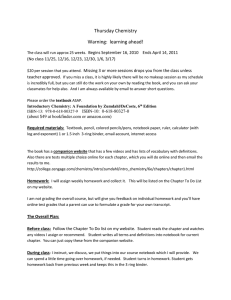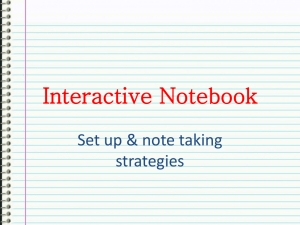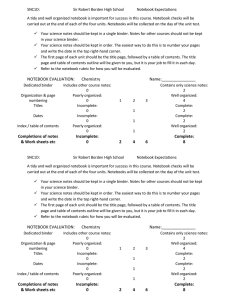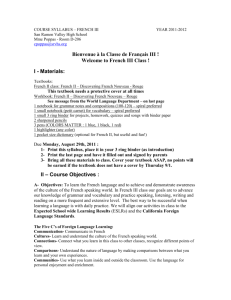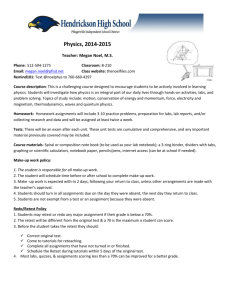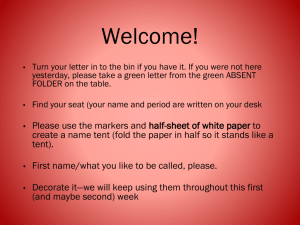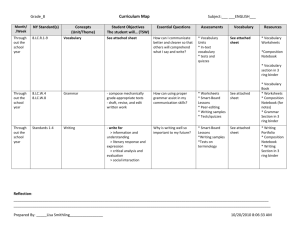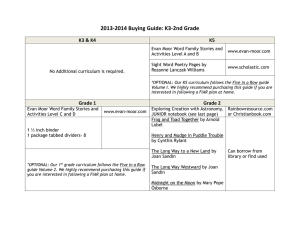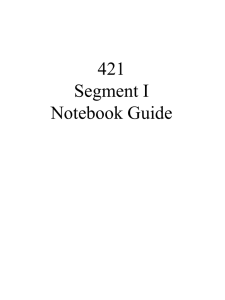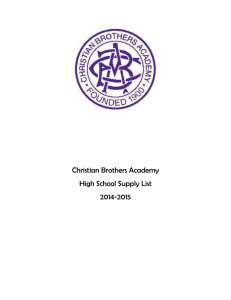WHAT IS TAKING CLASS NOTES ABOUT? Taking good classroom
advertisement
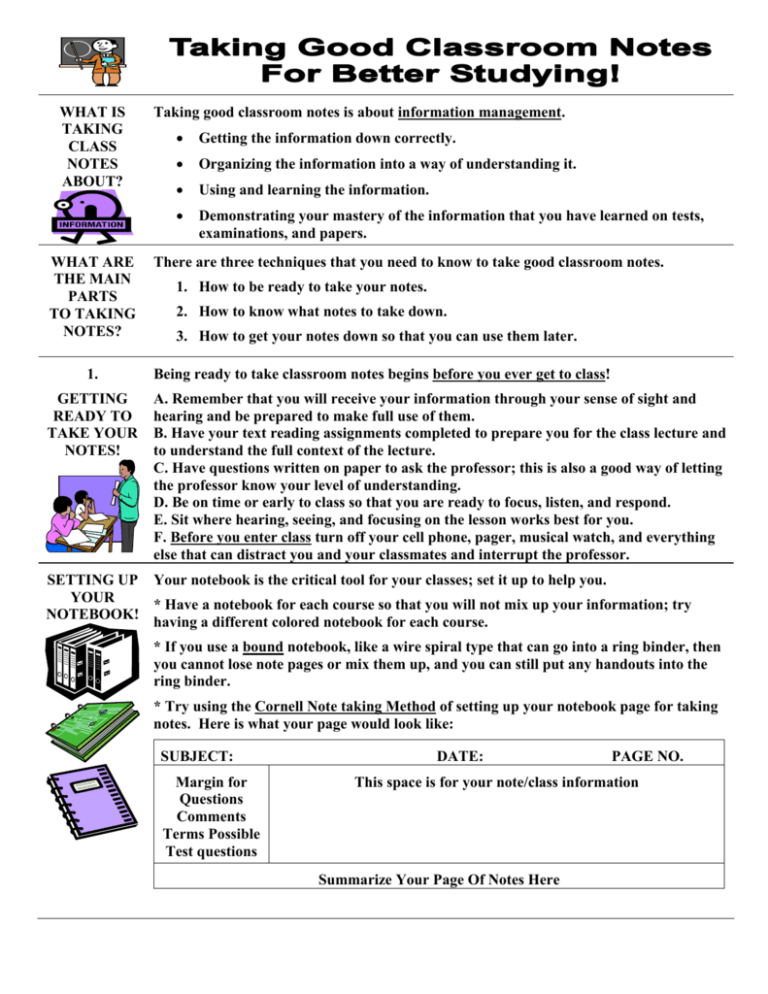
WHAT IS TAKING CLASS NOTES ABOUT? WHAT ARE THE MAIN PARTS TO TAKING NOTES? 1. GETTING READY TO TAKE YOUR NOTES! Taking good classroom notes is about information management. • Getting the information down correctly. • Organizing the information into a way of understanding it. • Using and learning the information. • Demonstrating your mastery of the information that you have learned on tests, examinations, and papers. There are three techniques that you need to know to take good classroom notes. 1. How to be ready to take your notes. 2. How to know what notes to take down. 3. How to get your notes down so that you can use them later. Being ready to take classroom notes begins before you ever get to class! A. Remember that you will receive your information through your sense of sight and hearing and be prepared to make full use of them. B. Have your text reading assignments completed to prepare you for the class lecture and to understand the full context of the lecture. C. Have questions written on paper to ask the professor; this is also a good way of letting the professor know your level of understanding. D. Be on time or early to class so that you are ready to focus, listen, and respond. E. Sit where hearing, seeing, and focusing on the lesson works best for you. F. Before you enter class turn off your cell phone, pager, musical watch, and everything else that can distract you and your classmates and interrupt the professor. SETTING UP Your notebook is the critical tool for your classes; set it up to help you. YOUR * Have a notebook for each course so that you will not mix up your information; try NOTEBOOK! having a different colored notebook for each course. * If you use a bound notebook, like a wire spiral type that can go into a ring binder, then you cannot lose note pages or mix them up, and you can still put any handouts into the ring binder. * Try using the Cornell Note taking Method of setting up your notebook page for taking notes. Here is what your page would look like: SUBJECT: Margin for Questions Comments Terms Possible Test questions DATE: PAGE NO. This space is for your note/class information Summarize Your Page Of Notes Here 2. HOW TO KNOW WHAT NOTES TO TAKE DOWN IN CLASS 1. Typical clues to knowing what information to take down in class: if the professor: • repeats himself/herself in class, • writes anything on the blackboard, • gives a list of any information, • shows excitement or interest in a particular subject, • spend a long time on a particular subject, • explains something carefully, • describes information as being important or likely to be on a test... then write this information down. 2. It may also help you to pace yourself to observe and use the professor’s presentation and conversational pattern in class: * Professor presents opening main point * Professor presents opening main point. * Explanation * Explanation * Supporting details * Time for questions * Professor summarizes before moving on * Professor summarizes before moving on to next point. to next point. USE ACTIVE LISTENING! The more that you can involve yourself in the class lecture by actively participating or by mentally challenging yourself, the less information that you will be likely to miss. 1. Always listen for the lecture to answer your questions about the material. 2. Think about the lecture in terms of what it means and what it is telling you. 3. Understand and write down the information in your own way and words. 4. Can you “picture” the information that you are getting? 3. There are three main ways that you can try taking down class notes: A. Paragraph Form – This involves writing sentences, phrases, key words, etc. almost in paragraph form, changing paragraphs with each new subject. This works if you can be sure that you will understand this format when you look back at it later. B. Outline Form – This is the most traditional form of note-taking which involves taking your notes in a highly organized style of Topics, Sub-Topics, and Details. 1. Major Topic A. Sub-Topic I. Detail II. Detail 2. Major Topic HOW TO TAKE DOWN NOTES! THE THIRD WAY TO TAKE NOTES: CONCEPT MAPPING 1. Concept mapping is a way to illustrate the information that you are getting in class. 2. Several standard types of illustration can serve many purposes in note-taking. Useful for comparing something, outlining cause and affect, identifying problems and solutions. Venn Diagram – Can display similarities (where spaces overlap) and differences at same time. Useful for classifying parts of something or class discussions. Center circle is the main point/question.







